Grade 11 Pre-AP Biology - Exam Review
1/539
There's no tags or description
Looks like no tags are added yet.
Name | Mastery | Learn | Test | Matching | Spaced |
|---|
No study sessions yet.
540 Terms
Plato and Aristotle believed that species were _______ and _________.
perfect, permanent
Why was evolution denied at first?
because it was believed that God created all life and therefore all life must be perfect and unchanging
_________ was not considered as a possible fate for species.
extinction
Strata
layers of fossils
How did the discovery of fossils shape how people saw evolution?
many of the fossils were from species that no longer existed, suggesting that extinction was possible
fossils found closer to the surface were more alike to living species today
Catastrophism
sudden natural disasters wipe out old species and are then replaced by a new species
Gradualism
the Earth changes gradually over time
Uniformitarianism
the Earth changes at a uniform pace throughout time
Lamarck vs Darwin
Lamarck: suggested that species change over time to adapt to their environments, and that during the course of the individual’s lifetime, they could acquire new traits based on “felt needs.” Those traits could then be passed on to offspring (e.g. saying a giraffe stretches its neck to reach food and therefore their children will be born with long necks)
Darwin: suggested the idea of Natural Selection; only the characteristics of individuals who survive are passed onto the next generation
What was the logic behind Darwin’s Theory of Natural Selection?
species typically produce more offspring than the environment can support + population sizes tend to remain stable = members of the same species must compete with each other for survival
individuals within a species differ from one another in their characteristics = individuals with characteristics better adapted to their environment will have a higher chance of surviving
the characteristics of the parents tend to be passed onto the offspring = those who survive will have the chance to reproduce and pass on their characteristics; those who don’t survive won’t
Natural Selection
“survival of the fittest” in which only those who best adapt to their environment survive and get to pass on their genes/characteristics
Carrying Capacity
populations grow exponentially until the environment cannot support their needs anymore
Descent With Modification
regarding natural selection; when only traits of surviving members of a species get passed down, then a gradual change in the overall characteristics of the species will occur
Evidence for Evolution (Anatomy)
Homologous Features
Analogous Features
Vestigial Features
Homologous Features
anatomical features that evolved from the same origin (e.g. fin of a whale, wing of a bat, hand of a human)
Analogous Features
anatomical features that look similar but are NOT evolved from the same origin (e.g. sharks, penguins, whales)
Vestigial Features
anatomical features that still exist in an organism’s anatomy but have no apparent function/purpose, suggesting that it is left over from the evolutionary past (e.g. whale’s hip bone, humans’ tail bone)
Evidence for Evolution (Embryology)
during development, organisms will sometimes show vestigial features that are no longer there at birth
Evidence for Evolution (Biogeography)
it is sometimes possible to infer the evolutionary history of different species by tracking how the populations may have moved from one area to another
Evidence for Evolution (Biochemistry)
chemical reactions inside closely related species will often be similar if not identical
Evidence for Evolution (Genetics)
human and chimpanzee DNA is 98% similar, suggesting that we are close relatives and perhaps evolved from the same ancestors
Types of Selection
Directional
Stabilizing
Disruptive
Sexual
Artificial
Directional Selection
selection against one extreme
FOR: one extreme trait
AGAINST: the other extreme
(e.g. long wiggly tails on a lizard look like a snake and scare predators. The longer the tail, the more it looks like a snake.)
Stabilizing Selection
selection against both extremes
FOR: moderate traits
AGAINST: both extremes
(e.g. short tails mess up a cat’s balance. Long tails drag on the ground.)
Disruptive Selection
selection against the mean
FOR: both extremes
AGAINST: moderate traits
(e.g. short tails on squirrels help keep predators from catching you on the ground. Long tails are good for balance in the trees.)
Sexual Selection
members of the same species compete with other males for the right to mate with a female. Therefore, species will evolve and have traits that will allow them to better attract a mate, thereby having a greater chance of reproducing
(e.g. only males have horns/antlers in many mammals, and they are used for males to fight each other for the right to mate with females)
Sexual Dimorphism
males and females of a species look different from each other (e.g. antlers vs no antlers)
Sexual Conflict
when evolutionary needs of males and females of a species are different (males are able to produce unlimited sperm, whereas females produce a limited # of eggs)
males want to mate ASAP
females want to be more selective in who they choose to reproduce with
elaborate mating rituals (e.g. fighting, dancing, singing) males are forced to perform are necessary to counteract sexual conflict
Artificial Selection
when humans are picking what individuals survive and mate; otherwise known as breeding (e.g. dogs)
Patterns of Evolution
Divergent Evolution
Radiation Evolution
Parallel Evolution
Convergent Evolution
Co-Evolution
Divergent Evolution
population is split and evolves into two different species (exposed to different selective pressures)
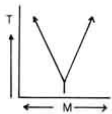
Radiation Evolution
population is split multiple times and evolves into many different species with a common ancestor (exposed to several different environments)
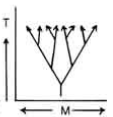
Parallel Evolution
two species diverge from a common ancestor but end up evolving to have similar traits anyways (exposed to same environment but are two different species)
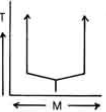
Convergent Evolution
species from greatly different evolutionary paths end up developing similar traits (to similar selective pressures, e.g. all analogous features)
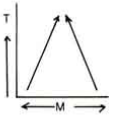
Co-Evolution
when the evolution of one species directly influences the evolution of another
Mutualism
Predation/Paracitism
Competition
Mutualism
win-win
Predation/Parasitism
win-lose
Competition
lose-lose
Evolutionary Arms Race
as the prey evolves to run faster, so will the predator
Genetic Drift
changes in the frequency of alleles within a population
these changes are caused by random chance, and affect the population more strongly if the population is small
(e.g. some black and red ants get run over on the sidewalk by a bike. the remaining ants may be mostly red by random chance = bottleneck effect)
Bottleneck Effect
population endures a sudden traumatic event that suddenly shrinks the population size. By random chance, the genetic makeup of the survivors may differ dramatically from that of the original population
Founder Effect
small group of individuals leaves a larger population to establish a new population elsewhere
the genetic makeup of the new population may differ significantly from the original population
Why is genetic diversity so important to evolution?
Genetic diversity is so important to evolution because without it, nothing would ever evolve. If everything reproduced asexually, all offspring would be carbon copies of the parent, which means nothing would ever change. Therefore, evolution would not be possible without genetic diversity.
Why is sexual reproduction so important to evolution (compared to asexual reproduction)?
Though sexual reproduction takes longer compared to asexual reproduction, it does have an advantage in that offspring produced by sexual reproduction have more genetic diversity, allowing them to overcome challenges in their environment with more ease.
Why do pesticides and antibiotics lose effectiveness with each use?
as bacteria are exposed over and over, they evolve to survive higher and higher concentrations each time
Mutations only affect evolution if they are __________.
inheritable
Harmful Mutations
Decreases the individual’s ability to survive
Lethal mutations usually do not last very long in the gene pool
Some harmful mutations may persist in the gene pool (especially if they are recessive)
Neutral Mutations
Has no effect on the individual’s ability to survive
Beneficial Mutations
Improves the individual’s ability to survive
A single new “allele” in one individual can gradually become the most frequent allele in the gene
pool. A new allele can rapidly become the most frequent gene if the selective pressure is great.
What is the ultimate outcome of natural selection and evolution?
the creation of a new species; speciation
Microevolution
the evolution of a new species from another species
Macroevolution
the evolution of entire groups of species
At what point are populations considered 2 separate species?
when they can no longer successfully reproduce with each other
Gene Flow vs Reproductive Isolation
Gene Flow: transfer of genes between 2 populations (through reproduction)
Reproductive Isolation: species are prevented from reproducing with each other - increasing the probability of speciation
Prezygotic Mechanisms
first line of defence to prevent reproduction; to prevent formation of a zygote
Ecological Isolation
Prevention of Mating
populations do not reproduce because they live in different areas of an ecosystem
Temporal Isolation
Prevention of Mating
populations may live in the same area but are reproductively active at different times
Behavioural Isolation
Prevention of Mating
populations have different mating rituals for attracting a mate
Mechanical Isolation
Prevention of Fertilization
individuals may attempt to mate but the anatomical parts are not compatible
Gametic Isolation
Prevention of Fertilization
the sperm of one species will not recognize the egg of another species
there may be a different # of chromosomes
Postzygotic Mechanisms
to prevent offspring from growing into healthy and fertile adults
Zygotic Mortality
postzygotic mechanism
no fertilized zygotes or embryos develop to maturity
Hybrid Invariability
a hybrid offspring is born but dies soon after
Hybrid Infatility
a hybrid offspring is born and lives a long life but is infertile
Modes of Speciation
Allopatric
Peripatric
Parapatric
Sympatric
Allopatric Speciation
species is split by a physical barrier
Peripatric Speciation
small portion of the population is split by a physical barrier
Parapatric Speciation
small portion of the population moves to an adjacent environment - populations keep to themselves (may be overlap)
Sympatric Speciation
a new species evolves from an original species while living in the same region WITHOUT any obvious physical separation
Punctuated Equilibrium vs Gradualism
Punctuated Equilibrium: speciation can occur in sudden bursts followed by long periods of little change
Gradualism: speciation occurs after enough changes have slowly appeared over time
What is the relationship between genetics, evolution and ecology?
Evolution is the outcome of Genetics when species are
required to survive inside an Ecosystem (Ecology)
Gene Pools
all of the alleles and genetic information that exists within a species
Charles Lyell
inspired Darwin
suggested Uniformitarianism
Thomas Malthus
inspired Darwin
suggested Carrying Capacity
Georges Cuvier
founder of paleontology
suggested Catastrophism
James Hutton
suggested Gradualism
Jean Lamarck
suggested Acquired Traits (giraffe example)
Homeostasis
process of maintaining a balance in an organism’s internal environment to sustain life
Physiology
study of how living organisms maintain homeostasis
Molecules → Organelles → Cells → Tissues → Systems → Organisms
Molecules → Organelles → Cells → Tissues → Systems → Organisms
Feedback Loop
Stimulus → Receptor → Control Center → Effector
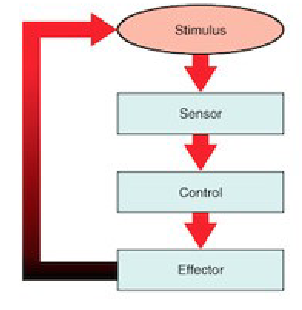
Negative Feedback Loop
response decreases the effect of the stimulus
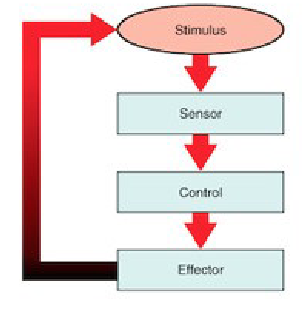
Positive Feedback Loop
response increases the effect of the stimulus
Stimulus
change in the environment
Receptor
part of the organism that detects the stimulus
Control Center
part of the organism that decides what to do about the stimulus
Effector
part of the organism that generates the response
Receptor sends information to the control center through an ________ _______.
afferent pathway (towards CNS)
Control center sends instructions out through an ________ ________.
efferent pathway (away from CNS)
Cranial
towards the head

Caudal
away from the head

Superior
higher

Inferior
lower

Posterior
back

Anterior
front

Lateral
closer to the side of the body
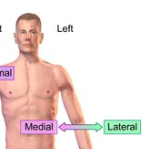
Medial
closer to the center of the body

Proximal
closer to the point of attachment (usually referring to limbs)

Distal
farther from the point of attachment (usually referring to limbs)

Sagittal Plane
person is cut symmetrically vertically
